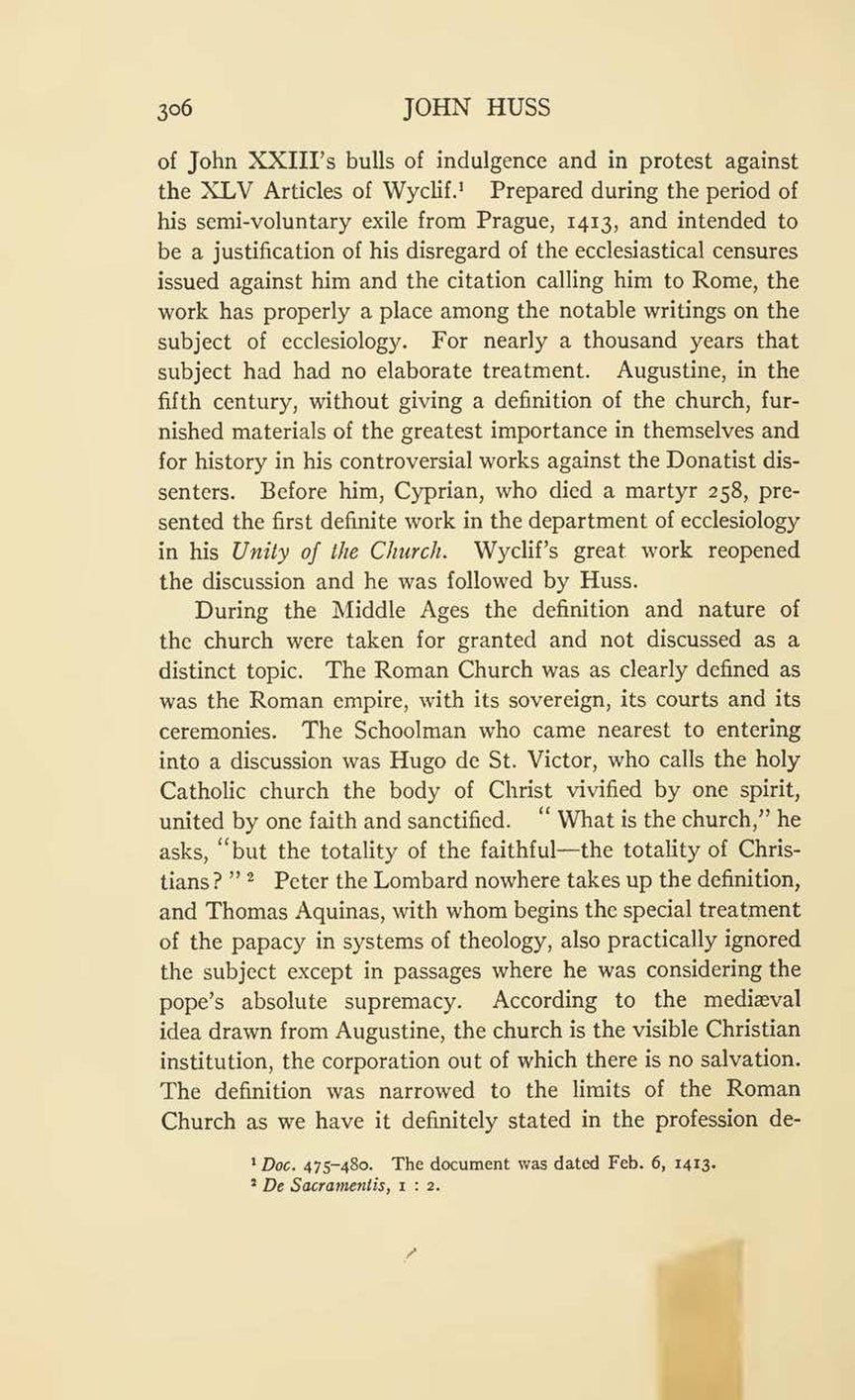of John XXIII’s bulls of indulgence and in protest against the XLV Articles of Wyclif.[1] Prepared during the period of his semi-voluntary exile from Prague, 1413, and intended to be a justification of his disregard of the ecclesiastical censures issued against him and the citation calling him to Rome, the work has properly a place among the notable writings on the subject of ecclesiology. For nearly a thousand years that subject had had no elaborate treatment. Augustine, in the fifth century, without giving a definition of the church, furnished materials of the greatest importance in themselves and for history in his controversial works against the Donatist dissenters. Before him, Cyprian, who died a martyr 258, presented the first definite work in the department of ecclesiology in his Unity of the Church. Wyclif’s great work reopened the discussion and he was followed by Huss.
During the Middle Ages the definition and nature of the church were taken for granted and not discussed as a distinct topic. The Roman Church was as clearly defined as was the Roman empire, with its sovereign, its courts and its ceremonies. The Schoolman who came nearest to entering into a discussion was Hugo de St. Victor, who calls the holy Catholic church the body of Christ vivified by one spirit, united by one faith and sanctified. “What is the church,” he asks, “but the totality of the faithful—the totality of Christians?”[2] Peter the Lombard nowhere takes up the definition, and Thomas Aquinas, with whom begins the special treatment of the papacy in systems of theology, also practically ignored the subject except in passages where he was considering the pope’s absolute supremacy. According to the mediæval idea drawn from Augustine, the church is the visible Christian institution, the corporation out of which there is no salvation. The definition was narrowed to the limits of the Roman Church as we have it definitely stated in the profession de-
